The propulsion methods for recreational boats can be broadly categorized into three types: (1) outboard motors, (2) inboard motors, and (3) inboard-outboard motors. By understanding these three systems, you can cover the majority of propulsion technologies, so this article focuses on these three methods only.
Please note that the content of this page reflects the author’s personal views and should be read as such.
Contents
Outboard Motors
Outboard motors are compact units mounted at the stern of the boat, as shown in Photo 1. These systems are characterized by their ease of maintenance.
Direction changes are achieved by swiveling the entire outboard motor assembly from side to side, eliminating the need for a rudder.
Additionally, outboard motors can be tilted up (as shown in Photo 3) to protect them almost entirely from seawater, preventing corrosion and barnacle attachment. When stored on land, the motors are typically positioned as shown in Photo 4.
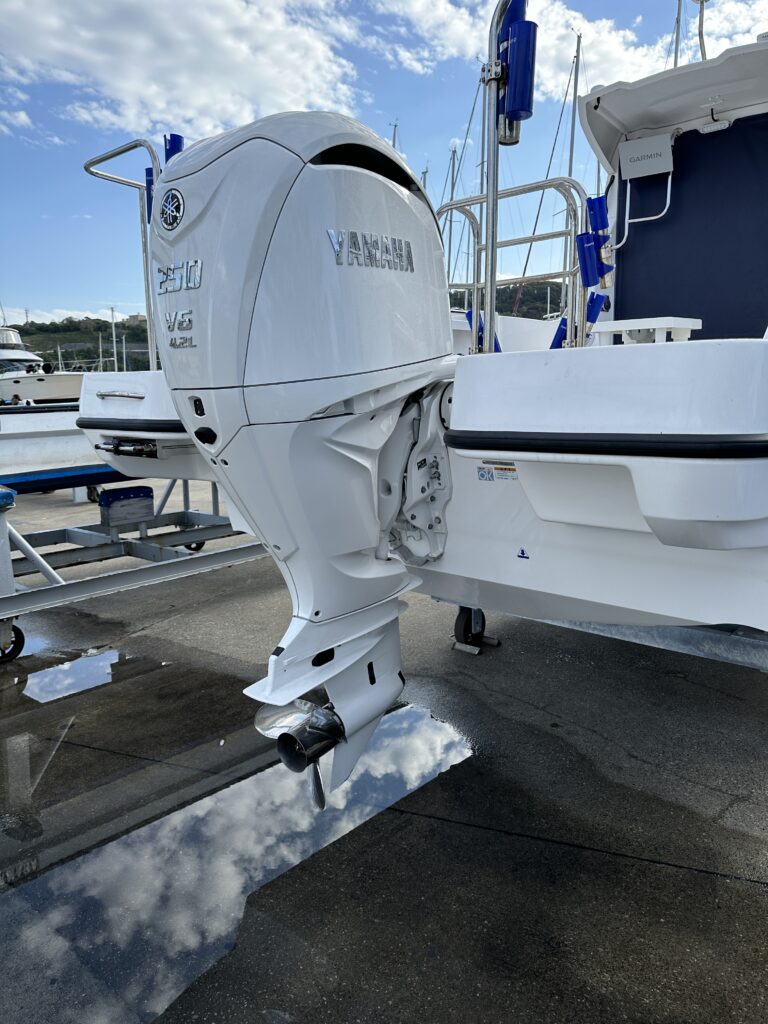
Photo2:Three outboard motors mounted on a boat stored on land. The two right-side propellers rotate clockwise, while the left-side propeller rotates counterclockwise.
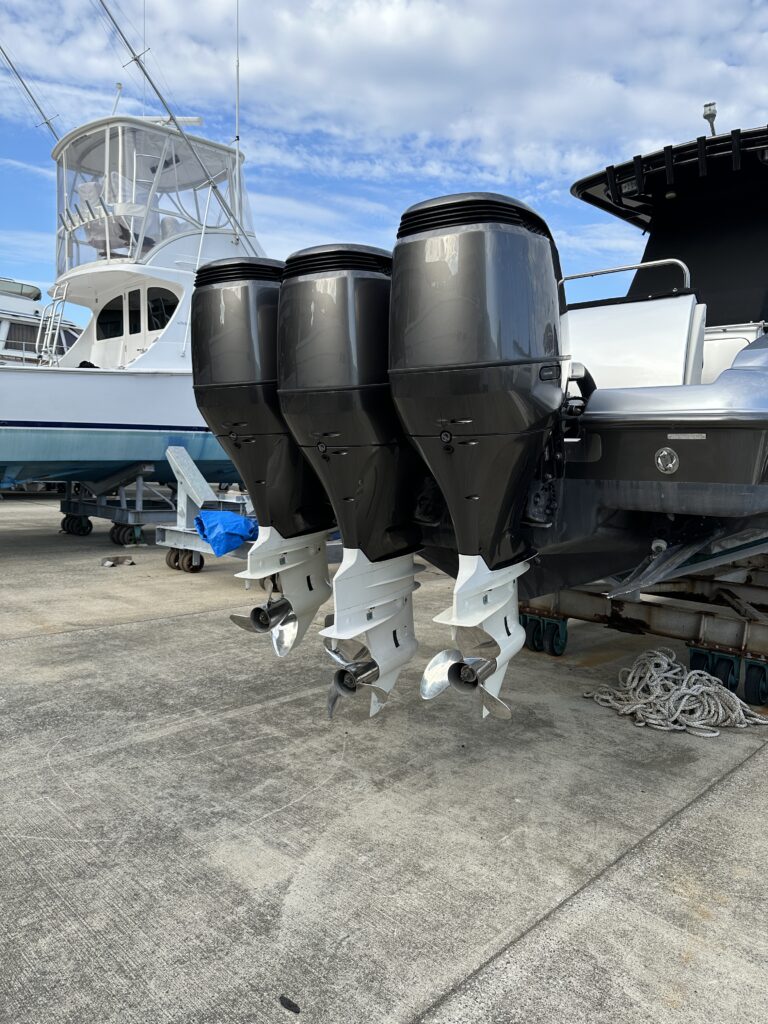
Photo 3: Two outboard motors tilted up on a moored boat, keeping their propellers out of seawat
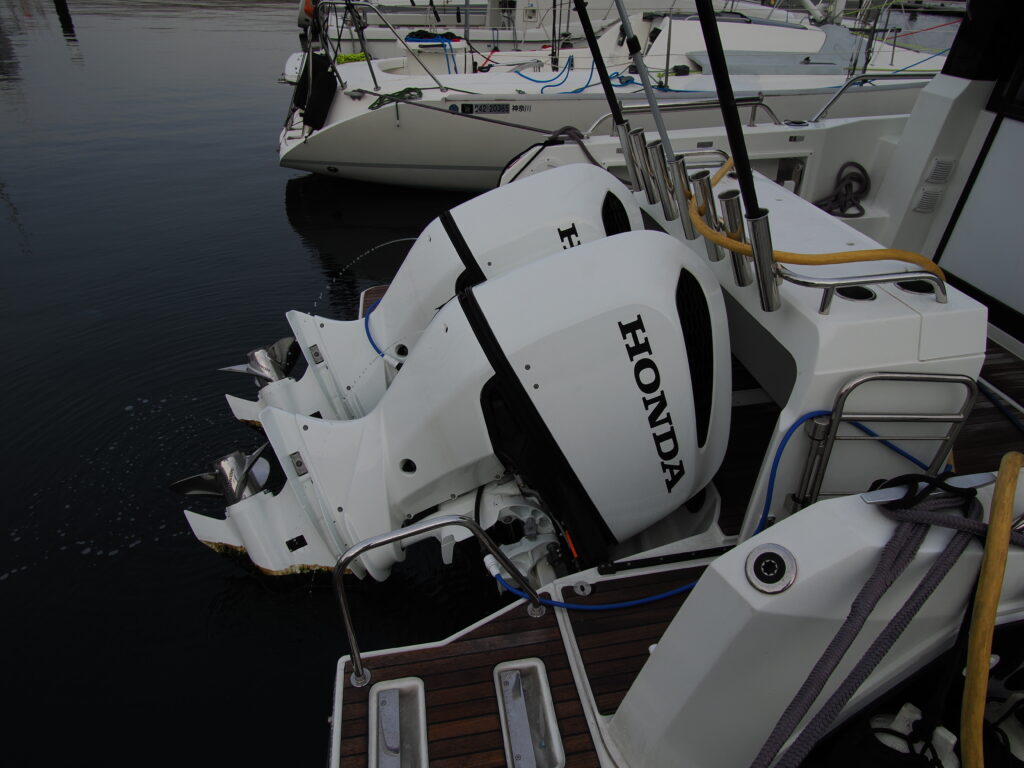
Photo 4: The same boat stored on land with the motors tilted up.
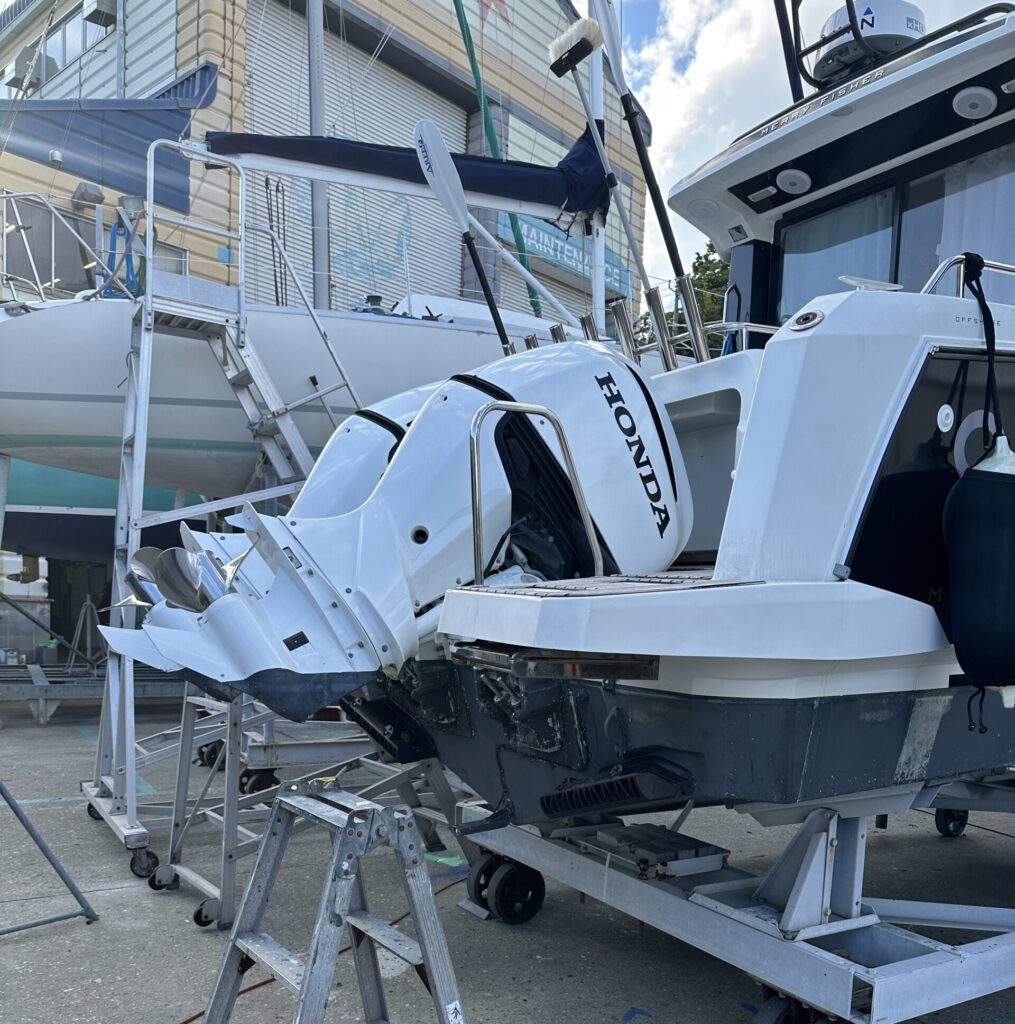
Advantages
- Highly maneuverable.
- Easy to repair and replace.
- Resistant to corrosion and barnacle growth.
- Can address issues like tangled ropes in the propeller while at sea.
- Suitable for planing boats.
- No hull penetration for a shaft.
Disadvantages
- Runs on gasoline, leading to higher fuel costs.
- Less suitable for larger vessels.
Inboard Motors (Shaft System)
Inboard motors are mounted inside the hull, typically in the center, as shown in Photo 5. Power is transmitted to the propeller through a shaft that penetrates the hull.
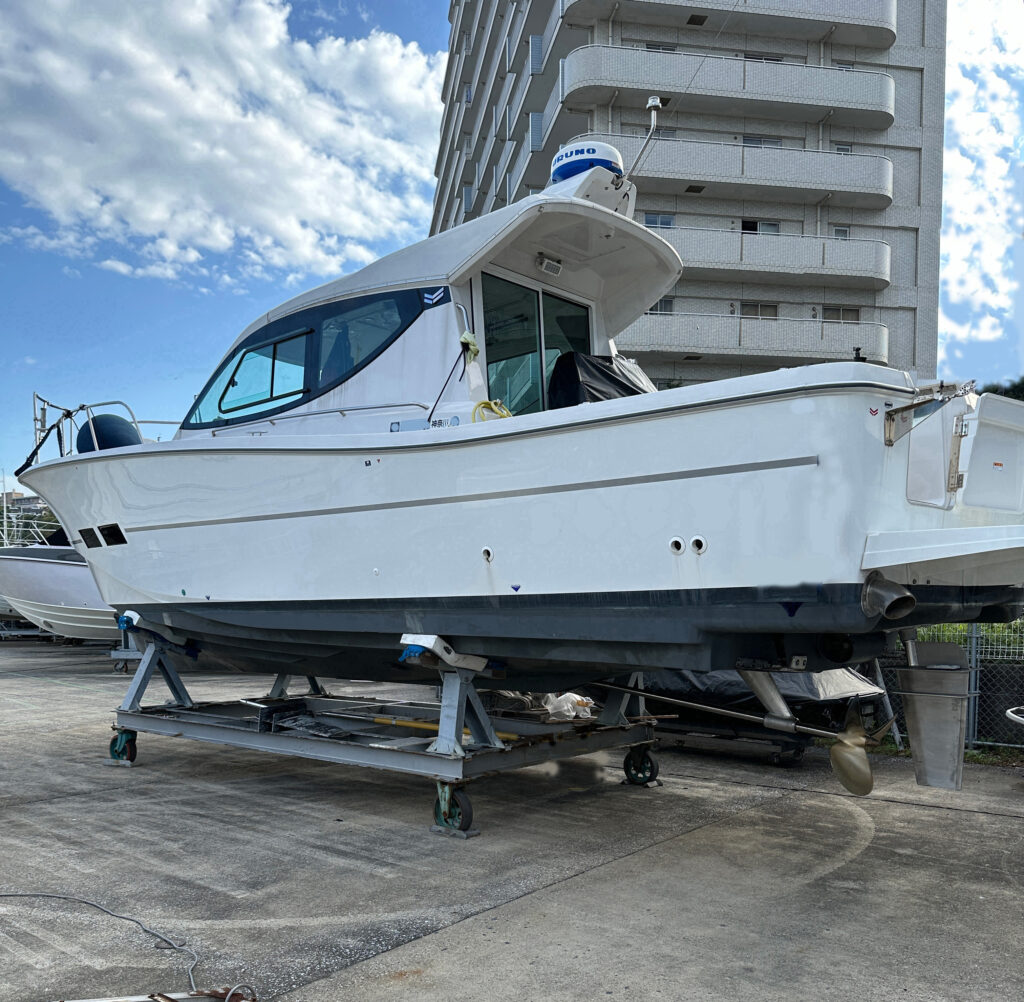
This propulsion system has a long history and is considered highly reliable due to its technical maturity. It uses a rudder to steer, separating the propulsion and steering mechanisms.
Photo 6: The shaft and propeller section are highlighted with a red outline for clarity.
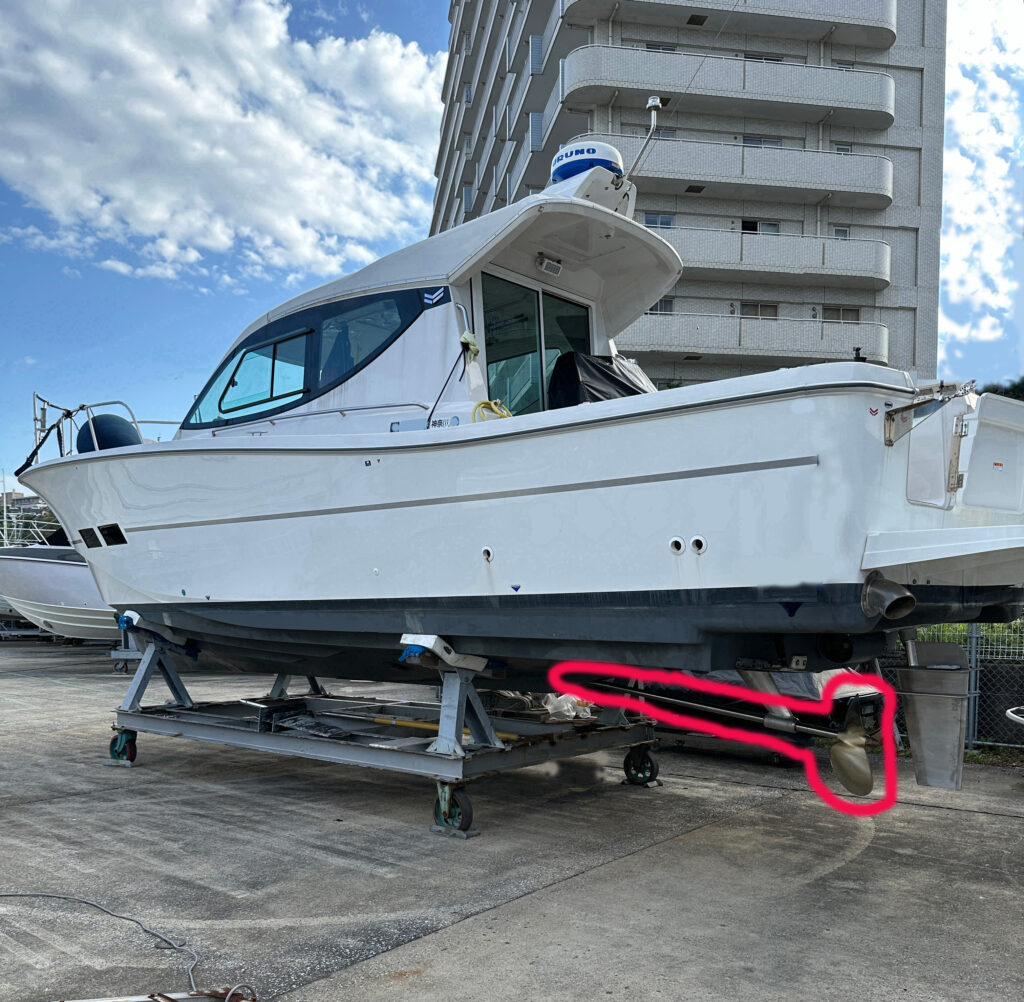
Photo 7: A close-up view of the red-outlined section from Photo 6.
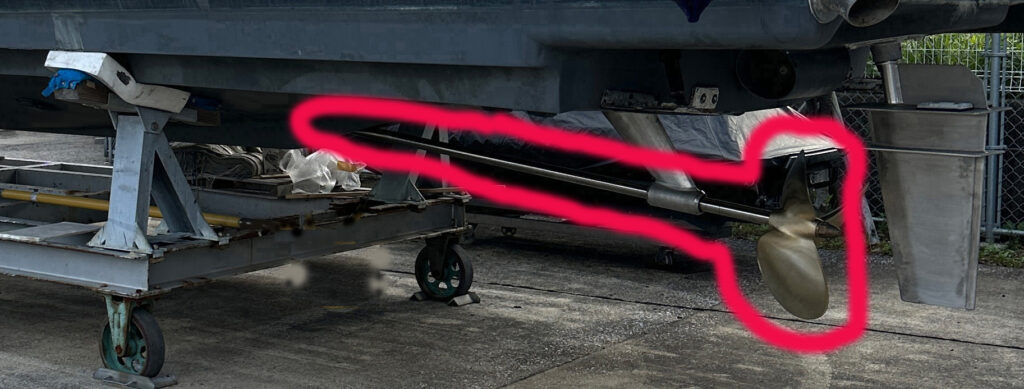
Photo 8: The rudder, unique to shaft-driven boats, is outlined in green. Neither inboard-outboard nor outboard motors use rudders.
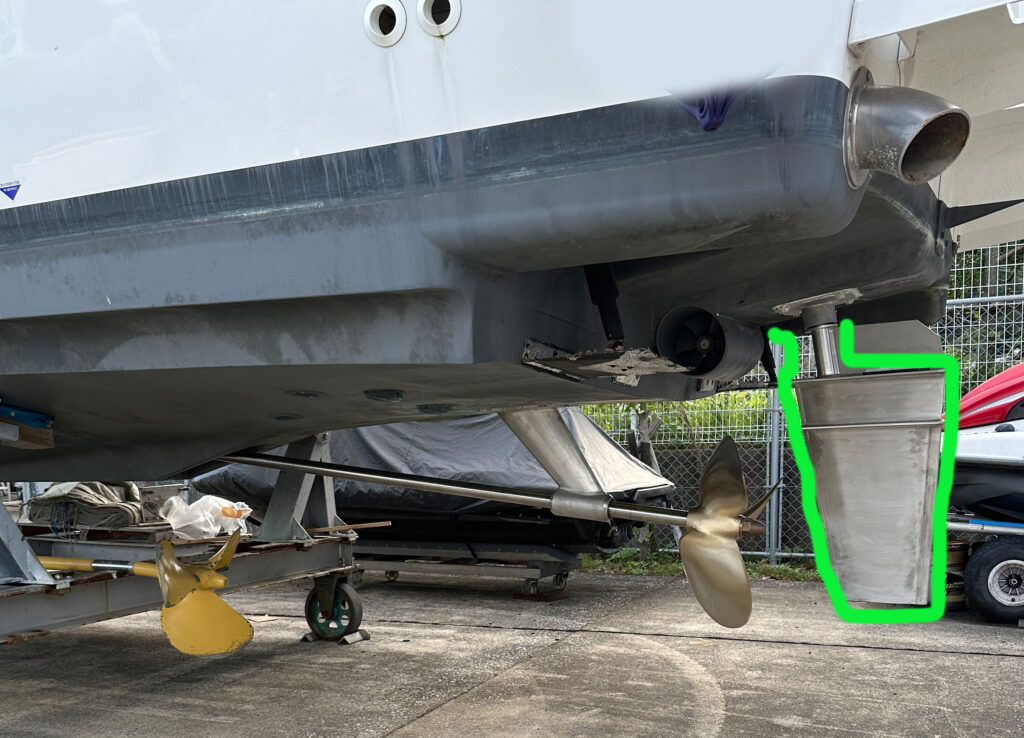
Some inboard motor boats are equipped with multiple engines and propellers.
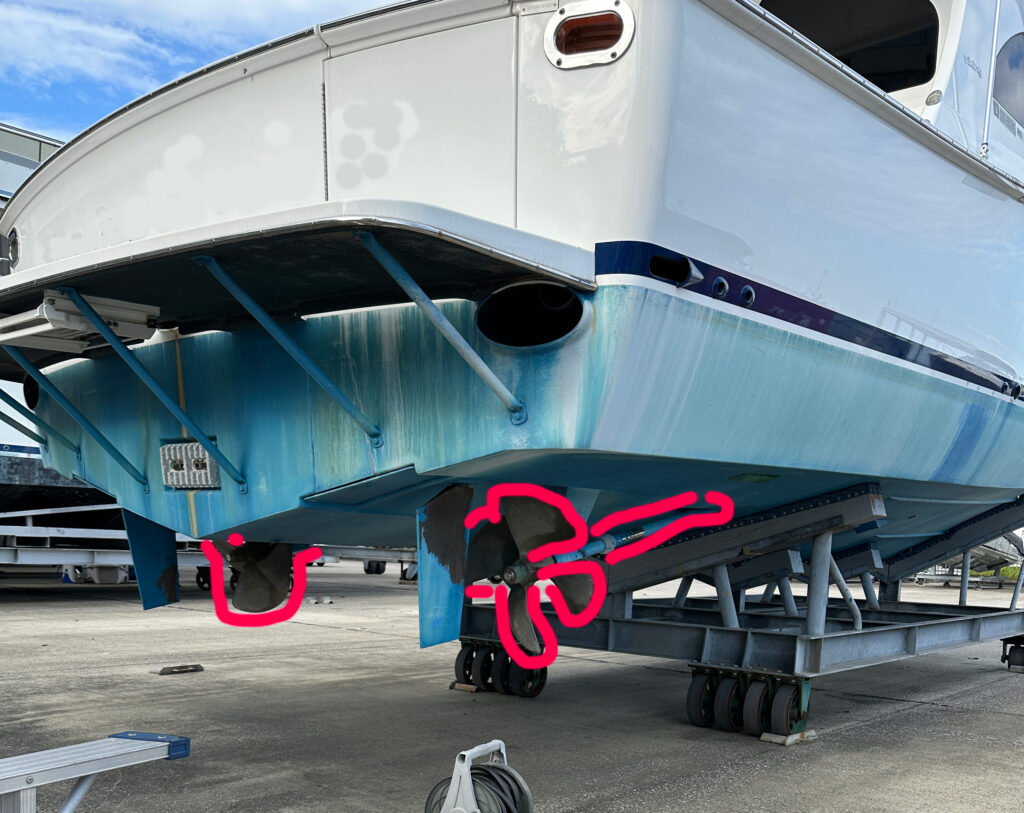
手前のシャフトとプロペラは分かりやすいですが、反対側はこの写真ではプロペラとシャフトの極一部が見えるだけでです。
Photo 10: Twin rudders on a twin-shaft boat, highlighted in green.
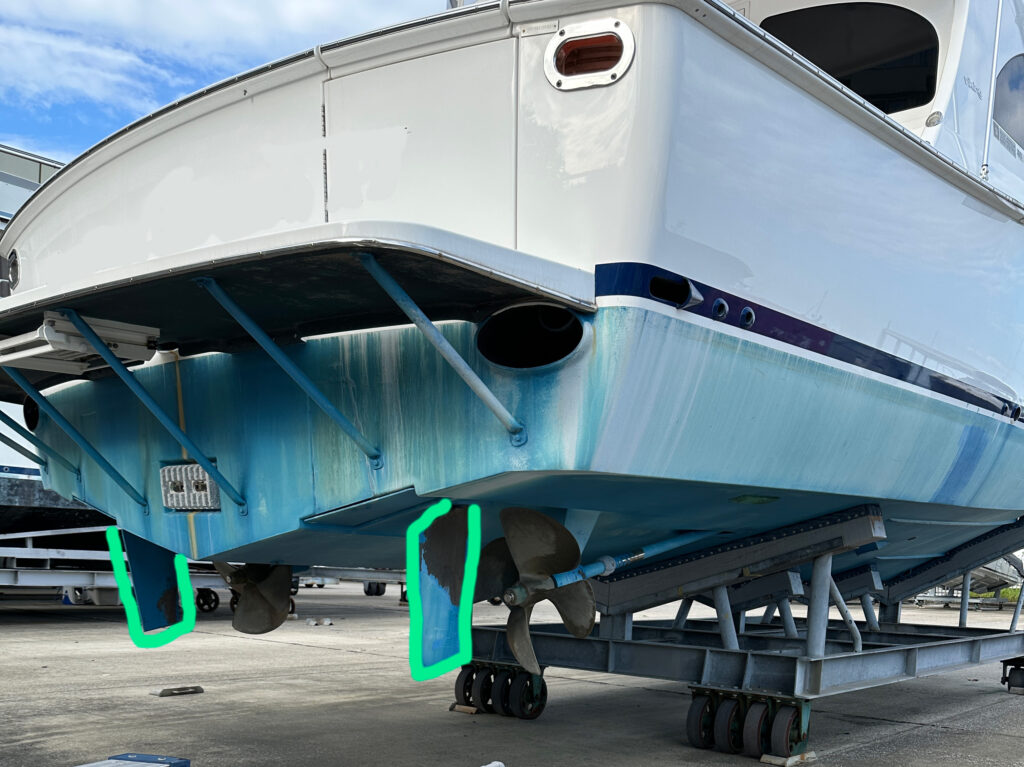
In a shaft system, the propeller rotates in a fixed position and direction to generate thrust. Steering relies on the rudder, a traditional mechanism that contributes to the reliability of inboard systems. Additionally, the long history of inboard propulsion has led to mature technologies, enhancing its dependability.
Advantages
- Stable due to the engine’s central placement at the bottom of the hull.
- Diesel engines can be used, providing high reliability.
- Simple and durable mechanisms.
Disadvantages
- Difficult to use in shallow waters.
- Noisy due to engine proximity to the cockpit.
- Repairs can be labor-intensive due to engine placement.
- Risk of water intrusion if the seal around the shaft penetration fails.
Inboard-Outboard Motors (Sterndrive)
Inboard-outboard systems combine the best features of outboard and inboard motors. As shown in Photo 11, the engine is located inside the hull, while the propeller is outside, connected through an outdrive mechanism.
Steering is achieved by swiveling the outdrive, similar to an outboard motor. This system also features a tilt function, allowing partial protection from seawater.
Additionally, some inboard-outboard systems use counter-rotating propellers. This technology, as illustrated in Photo 12, employs two coaxial propellers rotating in opposite directions to maximize propulsion efficiency. This mechanism delivers stronger and more efficient thrust.
(Note: Counter-rotating propellers are also found in some outboard motors, such as the Suzuki model shown in Photo 14.)
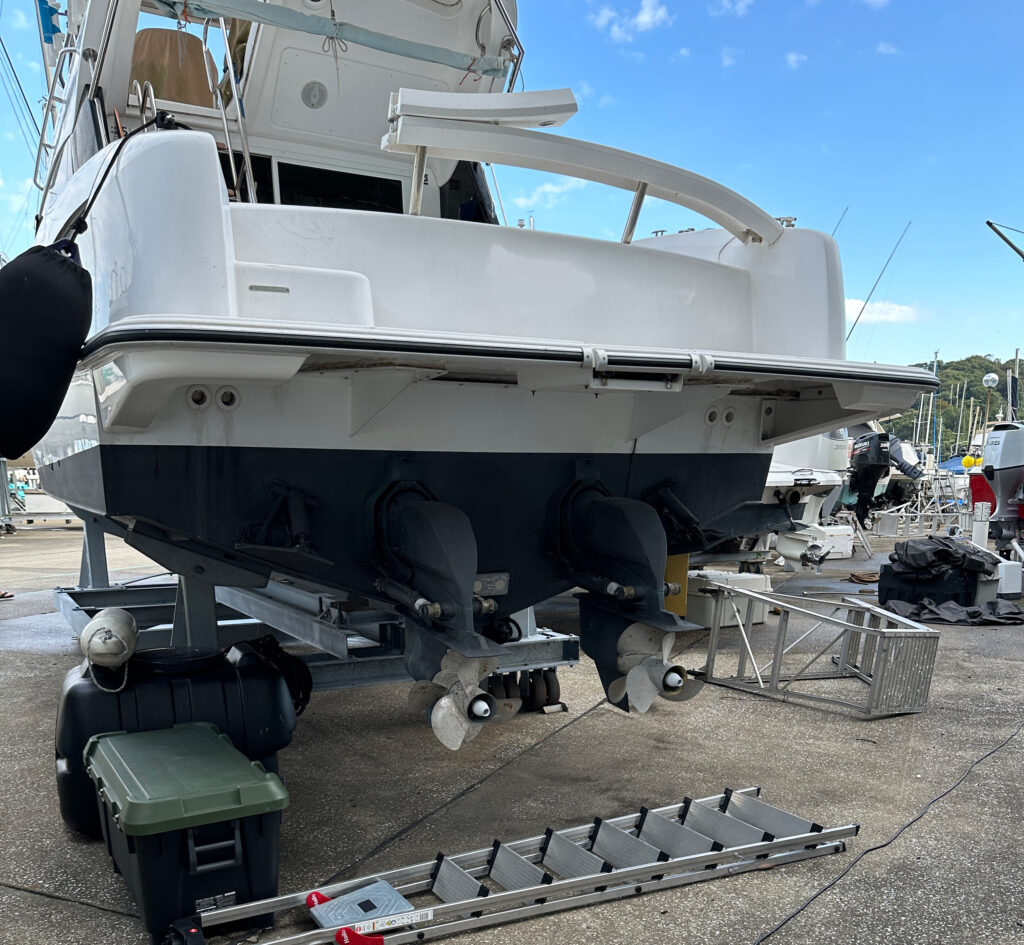
Photo 11 & 12: Outdrive units highlighted with red outlines to show the parts outside the hull.
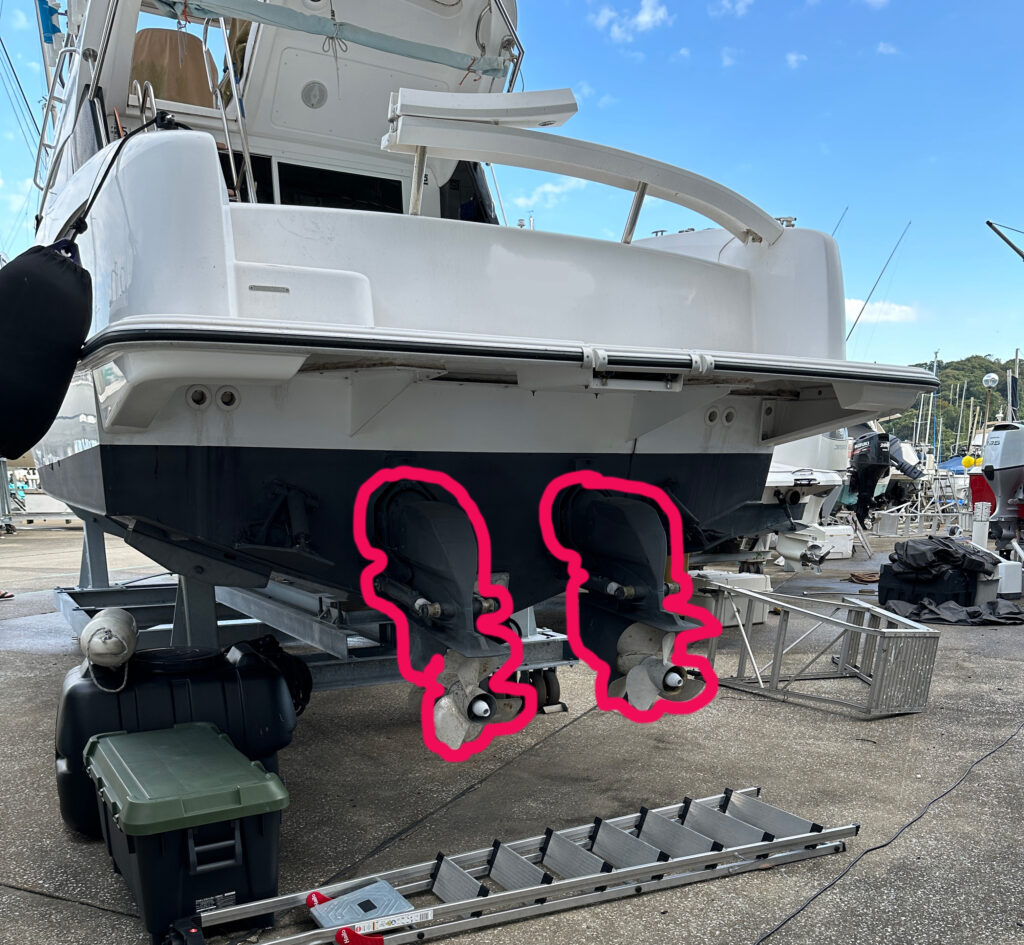
Advantages
- Durable diesel engines can be used, like in inboard motors.
- Highly maneuverable.
- Efficient propulsion with counter-rotating propellers.
- Quieter than shaft-driven boats due to the engine’s stern placement.
Disadvantages
- Submerged components are more prone to issues.
- Repairs at sea are challenging, making it less suitable for moored storage.
- The connection between the outdrive and hull, located below the waterline, can leak if seals fail.
Conclusion
The above outlines the three main propulsion methods, along with their advantages and disadvantages. I hope this serves as a useful reference.
As a side note, the inboard-outboard motor shown in Photos 11 and 12 uses a counter-rotating propeller system, also illustrated in Photo 13. Similar mechanisms are found in outboard motors, such as the Suzuki model in Photo 14.
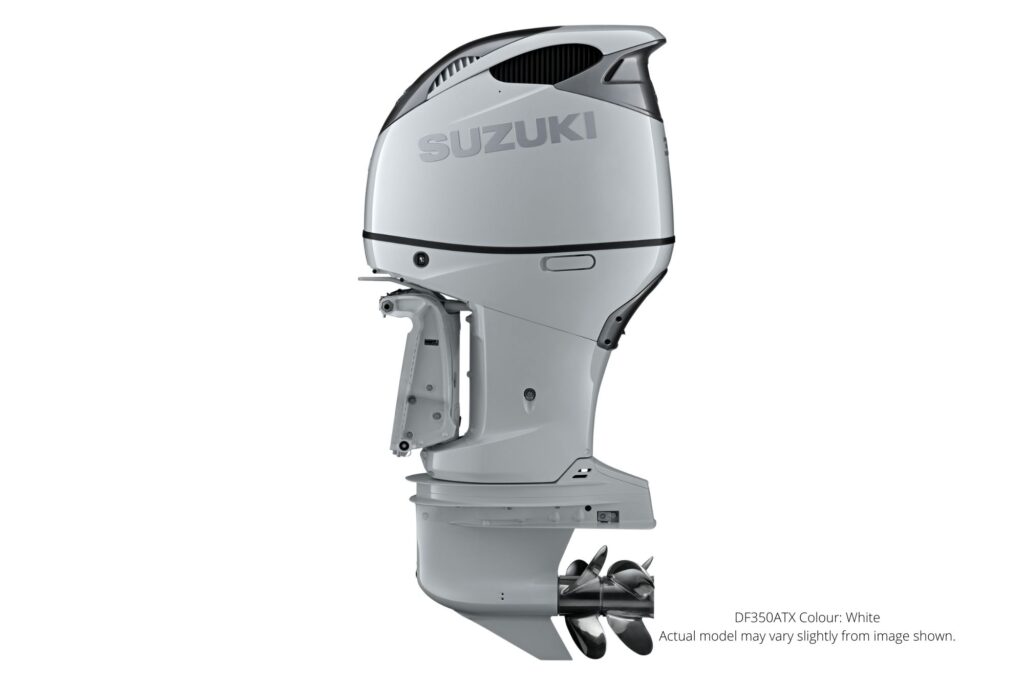
This is all for now。
For other contents on this site, please click the links below:
Table Of Content By Topic
PagesAbout Boating and Sailing
Pages About GR Yaris
Pages About OMDS (formerly Olympus) OM-1
Pages About Nissan Note e-POWER 4WD Pages About Life Hacks for Smooth Living
Pages About Second LIfe